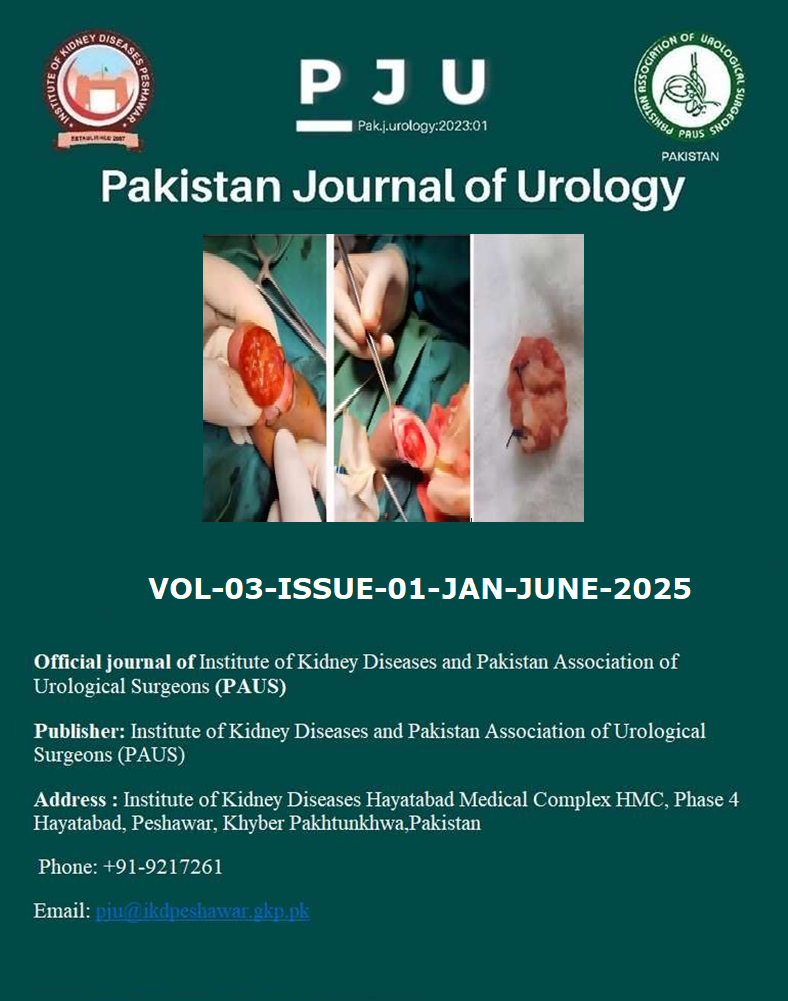Bacterial profiles and antibiotic sensitivity of Uro-pathogens in patients with urinary tract infection: Insights from a tertiary care hospital.
Original Article
DOI:
https://doi.org/10.69885/pju.v3i1.90Keywords:
UTI, Antibiotics, Culture & Sensitivity, UrineAbstract
Background: Urinary tract infection (UTI) is one of the most common illnesses, the mankind is suffering from and around 150 million people have been affected worldwide. UTI is defined as when a bacterium, mainly from the skin or rectum, enter the urethra and infect the urinary system. It affects kidney, ureter, bladder, and urethra, and other parts of the urinary tract
Objective: This study aimed to determine the common microorganisms that causes UTIs and evaluate the in vitro susceptibility and resistance pattern of these microorganisms to common antibiotics.
Materials and Methods: This cross-sectional observational and prospective study was conducted after ethical approval (IRB No. 1665) at the Pathology Department, Hayatabad Medical Complex, from December 5, 2023, to January 5, 2024. Patients with clinically diagnosed UTIs undergoing urine culture and sensitivity tests were included. The sample size (150) was calculated using Open Epi, assuming an 11% prevalence, 95% confidence interval, and 5% margin of error. Consecutive sampling was used, and demographic data were collected via a self-structured questionnaire. Data was entered and analyzed through SPSS version 2020.
Results: Among 150 patients (80 males, 70 females), E. coli was the most common uro-pathogen (69%), followed by Candida, Enterobacter, Providencia, Klebsiella, and Serratia. No significant gender-based difference in uro-pathogen prevalence was observed (p = 0.339). E. coli showed high sensitivity to Clindamycin (82.6%), while Nitrofurantoin was most effective against Candida (94.1%). Tigecycline exhibited strong activity against Enterobacter (83.3%) and Providencia (94.7%), while Colistin was 100% effective against Klebsiella. E. coli had the highest resistance to Imipenem (34.8%), while Candida showed high resistance to Colistin (64.7%).
Conclusion: This study concluded that E. coli was the most usually isolated bacteria and the most frequent cause of urinary tract infections among the studied population. The urinary tract infection was mostly reported in males and the infectious bacterial isolates showed multi-drug resistance against the tested antibiotics that are commonly used to treat urinary tract infection.
Downloads
Published
How to Cite
Issue
Section
License
Copyright (c) 2025 Ihsan Ullah Khan, Salma Khan, Abdul Haseeb, Jamal Ahmad Shah, Rafaqat Hussain

This work is licensed under a Creative Commons Attribution 4.0 International License.


















